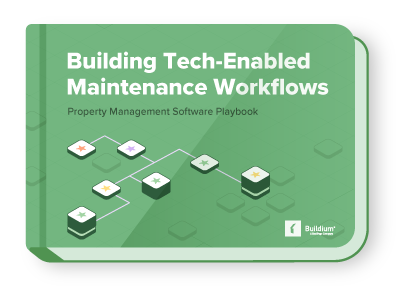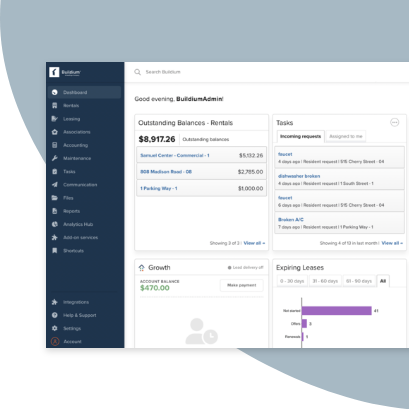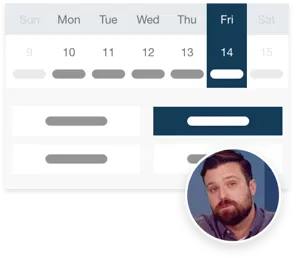Disclaimer: This blog post is meant for informational purposes only and does not constitute legal advice. Consult with a licensed attorney in Idaho for specific legal guidance.
Managing rentals in Idaho? Whether you handle one unit or a dozen, having the right lease agreement can help you stay organized and avoid headaches down the road.
Grab Buildium’s free Idaho lease agreement template at the top of this post to stay compliant and save time when drafting your next lease.
What Is an Idaho Lease Agreement?
An Idaho lease agreement is a legally binding contract between a landlord (or property manager) and a tenant. It lays out all the key details—how long the lease lasts, how much rent to collect, who’s responsible for what, and what happens if something goes wrong.
This document sets expectations for everyone involved. When you have everything written down from day one, it’s easier to handle disagreements and protect your rental property.
Who Needs an Idaho Lease Agreement?
Anyone renting out residential properties in Idaho should use a written lease agreement. That includes property managers, landlords, and investors.
Tenants also benefit from having a lease. It gives them peace of mind, knowing what they can expect and what’s expected of them.
In Idaho, leases that last longer than one year need to be in writing to hold up in court. But even for shorter rental terms, a written agreement helps cover your bases and lower the chances of miscommunication.
Why it matters:
- You lock in important info, such as rent amount and due dates
- Everyone knows their rights and responsibilities
- You’ll have a paper trail if problems come up
- Courts look for written proof in legal disputes
Types of Idaho Lease Agreements
Different types of Idaho lease agreements work better in different situations. Here’s a quick breakdown of the most common ones:
1. Fixed-Term Lease Agreement
This is the go-to lease for long-term rentals, usually 12 months. It includes all the standard terms, from rent amounts to repair rules.
2. Month-to-Month Lease Agreement
Need flexibility? This lease renews every 30 days until someone ends it. It’s great for tenants in transition or those unsure of long-term plans.
3. Sublease Agreement
This one lets a current tenant rent part or all of the unit to someone else. You’ll want written approval from the landlord before moving forward.
4. Roommate Agreement
Roommates can use this to lay out who pays what, how chores get split up, and what to do if one person moves out early. It works alongside the main lease.
What Should an Idaho Lease Agreement Include?
A solid Idaho lease agreement should cover more than just rent. Make sure it checks all the right boxes so you’re not left guessing when an issue pops up.
Parties Involved
Include the full names of the landlord (or property management company) and all adults living in the unit. Anyone over 18 should sign the lease.
Lease Duration Dates
Spell out the start and end dates. Mention whether it’s a fixed-term lease or month-to-month. Add a section explaining how renewals or move-outs work.
Rent and Security Deposit Information
Be clear about:
- Monthly rent amount
- When rent is due
- How tenants should pay
- Late fees
- Security deposit amount and rules
Occupancy Limits
Set the maximum number of people allowed to live in the unit. This helps prevent overcrowding and surprise roommates.
Property Management Company & Tenant Responsibilities
List who handles what. For example:
- Maintenance and repairs
- Lawn care, snow removal, pest control
- Reporting issues
When both sides know what to do, it’s easier to avoid confusion.
Pet Policies
Allow pets? Include rules for breed, size, or how many are allowed. Mention if there’s pet rent or a pet deposit.
If pets aren’t welcome, make that crystal clear.
Idaho Lease Agreement Addenda and Disclosures
Adding the right disclosures and extras helps cover your legal bases and keeps tenants informed. Let’s delve into some of the most important addenda and disclosures for Idaho lease agreements. This list is not exhaustive, so consult a legal professional if you’re unsure about what to include in your own agreements.
Lead-Based Paint Disclosure
If the property was built before 1978, federal law says you must:
- Disclose any known lead-based paint risks
- Give tenants the official EPA booklet
- Include a signed lead disclosure in the lease
Optional Disclosures & Addendums
Depending on your rental setup, you might want to add:
- Mold or asbestos disclosures
- Smoking policies
- Move-in and move-out checklists
- Rules about utilities
- Proof of renter’s insurance
These extras help clear up common questions before move-in day.
Consequences for Not Including Mandatory Disclosures
Leaving out required disclosures could lead to:
- Fines or legal trouble
- Lease terms being thrown out in court
- Tenants withholding rent
- Liability for health-related issues
Don’t leave it to chance—cover all required disclosures and double-check with a legal expert if needed.
Idaho Lease Agreement Laws and Regulations
Let’s go over some Idaho laws every property manager should know when building or reviewing a lease. Again, it’s always recommended to speak with a local legal professional for the most complete and detailed list of regulations.
Security Deposits
Under Idaho law, there’s no cap on how much you can charge, but you must return the deposit within 21 days (or up to 30 if written in the lease). You should also send an itemized list if you keep any portion and save receipts and records for anything you deduct.
Right of Entry
Idaho law does not specify a warning time before entry, but as a general rule, you should give tenants at least 24 hours’ notice, unless there’s an emergency. Additionally:
- Entry should happen during normal daytime hours
- Send notice in writing (email is fine if both parties agree)
- Mention this rule in your lease so there’s no confusion later
Grace Period
Idaho doesn’t require a grace period by law, but many landlords allow 3–5 days before charging late fees.
Whatever you decide, include it in the lease so everyone’s on the same page.
Late Fees
Idaho law stipulates that only a reasonable late fee should be charged, specifically, a fee of twenty dollars ($20.00) or twenty percent (20%) of the monthly rent, whichever is greater.
Taking the Next Steps with Your Idaho Lease Agreement
Your lease sets the tone for the entire rental experience. When it’s well-written and legally sound, it makes life easier for everyone—property managers, tenants, and even your maintenance team.
The good news? You don’t have to write one from scratch.
Download Buildium’s free Idaho lease agreement template using the button at the top of this post save time, stay up-to-date with 2025 laws, and handle leases with confidence.
And, for an even faster leasing process, consider testing out Buildium’s comprehensive property management software. You can give it a try with a 14-day free trial or by signing up for a guided demo.


